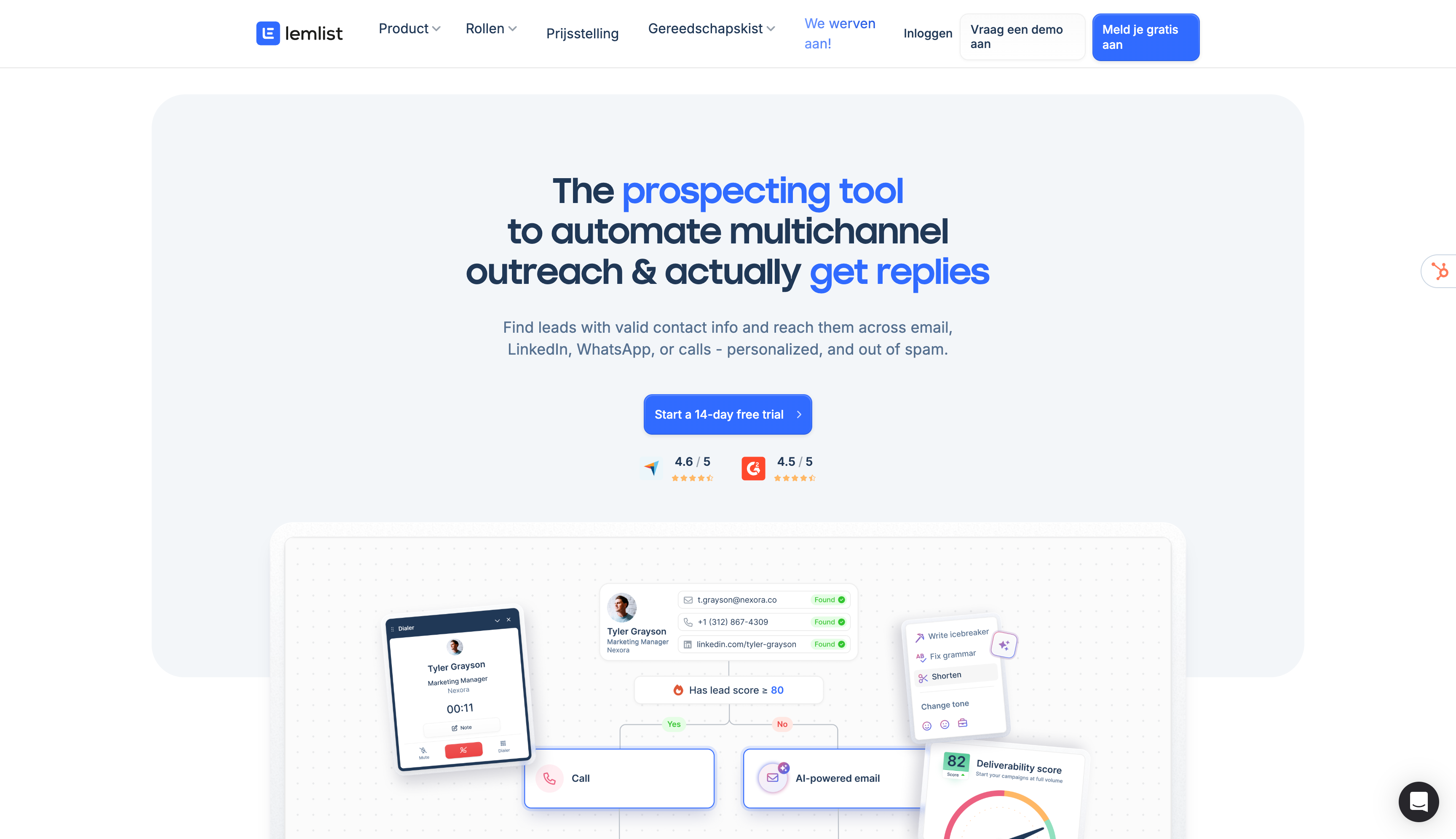Your ICP describes the specific type of customer most likely to buy from you, see value quickly, and stay long-term.
Company characteristics
For B2B businesses, start with firmographic data. Company size (number of employees or revenue range), industry, geography, and business model. A company with 10 employees has completely different needs and budget than one with 1,000 employees. A SaaS company operates differently than a services business.
Don't just describe any company that could theoretically benefit. Describe the company where you have the highest probability of success. Where does your solution fit naturally? Where do you have credibility? Where can you demonstrate ROI clearly?
Pain points and goals
What specific problem does your ICP face? Not generic challenges everyone has, but acute pain that makes them actively search for solutions. What keeps them up at night? What have they already tried that didn't work?
Then flip it: what are their goals? What does success look like? If they could wave a magic wand and fix this problem, what would change in their business? Your solution needs to connect directly to these goals, not just solve the immediate pain.
Decision makers and process
Who actually makes the buying decision? In small companies, it's often the founder or CEO. In larger organisations, you might need buy-in from multiple stakeholders. Understanding this now shapes everything from your messaging to your sales process.
Also understand the decision-making process. Do they need approval? What's their budget cycle? How long do decisions typically take? A €2,000 purchase by an individual contributor has a completely different process than a €50,000 purchase requiring CFO sign-off.
Example: Solid Growth (Consulting)
For my consulting business, the ICP is B2B service companies or SaaS companies with €500K to €5M in annual revenue. They have a team of 5 to 30 people. They're doing marketing and sales activities but lack a head of growth or growth expertise internally.
The pain point is clear: they're trying things but don't know if they're building the right systems. They've hired agencies before and felt like they were just renting knowledge. They want to own their growth capabilities, not depend on external partners forever.
Their goal is to build a predictable growth machine they can run themselves. They want their team to understand what they're doing and why, so they can optimise over time without staying dependent on consultants.
The decision maker is typically the founder or CEO. In companies at this stage, major investments still go through the top. The buying process is relatively quick once they see the value, usually one or two conversations, then a pilot project to prove we can work together.
Example: Solid Growth (Course)
For the course, the ICP is different. These are B2B marketers, heads of growth, or founders at any company size who want to understand the complete growth system. They might be at a €200K company or a €10M company. The unifying characteristic is they want to level up their growth knowledge.
The pain point is fragmented understanding. They know tactics (run ads, write content, send emails) but don't see how it all fits together. They've read books and taken courses that were either too theoretical or too narrow on one tactic.
Their goal is to build a mental model of how B2B growth actually works. They want a framework they can apply to any B2B company, whether they're building for their own business or advising clients.
The decision maker is the individual. This is personal professional development. Budget is typically €1,000 to €2,000 per year for learning, so a €995 course is a considered purchase but within reach. Decision process is quick: they read the sales page, maybe email with questions, then buy or don't.
Example: Spectacle
Spectacle has two distinct customer personas because they sell through agencies and directly to end customers.
Agency persona: Marketing agencies that serve SaaS and subscription clients. These agencies run paid campaigns, SEO, content marketing, and need to prove ROI to their clients. They're looking for attribution tools they can implement for multiple clients.
Pain point: they can't definitively prove which marketing activities drive valuable customers. Clients question whether the retainer is worth it. Agencies lose clients because they can't demonstrate clear ROI.
Goal: show clients exactly which campaigns and channels drive quality customers so they can optimise spend and retain clients longer. The decision maker is the agency owner or head of client services. Budget exists because it's billed back to clients.
End customer persona: Heads of growth or marketing at SaaS companies with annual recurring revenue between €500K and €10M. They're spending €5,000 to €50,000 per month on paid advertising and content. They have multiple channels running but poor visibility into what actually works.
Pain point: wasting budget on channels that don't drive valuable customers. They track vanity metrics (clicks, impressions) but don't know which activities drive customers who actually stay and generate revenue.
Goal: cut wasted ad spend and double down on channels that drive sticky customers. Increase marketing ROI without increasing total budget. The decision maker is the head of growth or CMO, sometimes requiring CFO approval for larger contracts.
Spectacle is currently doing founder-led sales to both personas, but they're building product-led growth capabilities so end customers can sign up and see value without requiring agency implementation.
Example: Lemlist
Lemlist has two go-to-market motions serving different customer profiles within the same market.
Self-serve customers: Individual salespeople or small sales teams (one to five people) at B2B companies. These are typically account executives, sales development reps, or founders doing their own outreach.
Pain point: cold emails end up in spam, or they lack tools to personalise at scale. They're sending outreach manually or with basic tools that don't handle deliverability. Response rates are terrible.
Goal: get cold emails into inboxes and increase reply rates through personalisation. The decision is made by the individual user or small team lead. Budget is a few hundred euros per month. They sign up, try the free trial, and convert (or don't) based on results. No sales calls needed.
Enterprise customers: Sales teams with 10 to 50 salespeople at companies doing serious outbound volume. The decision maker is the head of sales, VP of sales, or chief sales officer.
Pain point: coordinating outreach campaigns across a large team is chaotic. Individual reps use different tools, messaging is inconsistent, and there's no central visibility into what's working. At scale, deliverability becomes critical because one rep's bad practices can hurt the entire domain.
Goal: coordinate campaigns across the team, maintain consistent messaging, and ensure deliverability at scale. They need team management features, reporting, and support for onboarding multiple users.
The buying process requires demos, ROI calculations, and often approval from the head of revenue or CFO. Contract values range from €5,000 to €20,000 per month. The sales cycle is longer, typically four to eight weeks with multiple stakeholders involved.
How to validate your ICP
The best way to validate your ICP is to look at your current customers. If you have even five customers, patterns emerge. Who are your best customers? Who pays on time, sees results quickly, refers others, and doesn't drain your support resources? Those are your ideal customers. More of them, please.
If you're starting from scratch, make educated guesses based on market research and customer interviews. Then adjust as you get real customer data. Your ICP isn't static. It evolves as you learn what actually works.

.png)



%2520(1).webp)